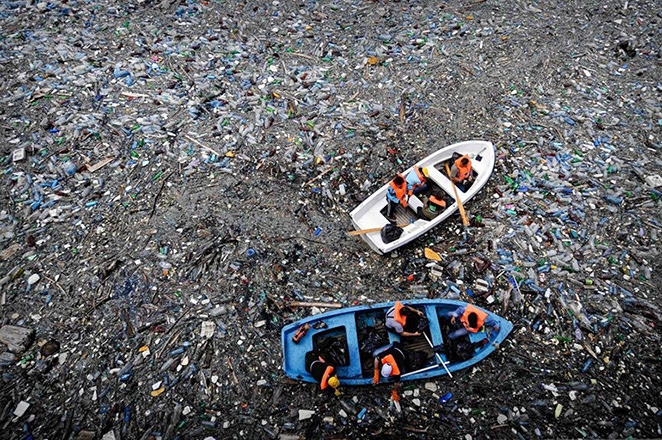Extended Producer Responsibility on the Rise in Response to Single-Use Plastics
The recycling industry faces pricing and other challenges, leading to an increased interest in Extended Producer Responsibility (EPR) as a potential solution. Concerns persist regarding the influx of ocean plastics, with no new bills passed in the U.S. in 2023, despite past efforts.

There is concern about rising ocean plastic pollution, but despite public policy discussions and bills introduced, no significant legislative action has passed in the U.S. this year. While there is interest in recycling, pricing and market dynamics remain challenging for municipalities and recycling programs.
Anne Germain, chief operating officer and senior vice president of regulatory affairs at the National Waste & Recycling Association (NWRA), recently discussed the connection between the rise of single-use plastic awareness and its impact on legislative efforts.
While several bills focused on Extended Producer Responsibility (EPR) have been introduced in 2023, 11 to be exact, none passed the legislative process. Last year, four statewide bills in Maine, Oregon, Colorado and California successfully passed the legislative process.
"People are extremely worried. In 2018, it became such a Zeitgeist moment that single-use became the Word of the Year for Collins dictionary," Germain explained. "That same year, The Royal Statistical Society had a statistical theory you probably didn't even know there was a statistical theory. But they chose the amount of plastic that became waste as their statistic of the year. Dictionaries can choose any word, and they could have chosen twerking. But looking at single-use, that tells you something."
According to estimates, the number of plastics in the ocean will overshadow the amount of fish by weight in 2050, according to the Ellen McArthur Foundation. A circular economy is the answer to reducing ocean plastic pollution, Germain said.
While many point to China Sword and the abundance of plastic pollution in the United States, China and other Asian and African countries contribute to most ocean plastic waste generation.
"If you look at the U.S., we don't consider potential leakage as a result of our exports. It's just what happens in the United States," she said. "The majority of plastics that we're releasing into the oceans is microplastics, which, when we talk about the waste industry, we really don't contribute to the microplastics."
The number one contributors to ocean plastic pollution in the U.S. are city dust, tires and textiles.
When considering exports, Canada and Mexico continue to receive U.S. exports, with little in the way of exporting overseas. And U.S. plastic bottles aren't typically recycled into plastic bottles, making the system not fully circular.
"We're doing very little in the way of exporting overseas and in plastics recycling anymore, but it's not necessarily truly circular at this point," Germain explained. "We're talking about the circular economy, or a bottle gets made into a bottle. Our plastics are still not being made into bottles. They're being made into fiber, pipes, things like that. So that is part of the reason why we have some of the brands supporting the idea of EPR is because they're not getting this material back."
Brands are simply not buying recycled feedstocks. Despite some claims that supply constraints contribute to a disjointed system, pricing remains the more significant culprit.
"Why do we care about pricing so much? Well, if you look at the price of recyclables, we're not for joining some great value," she stated.
The pandemic was "good to the recycling industry," noted Germain, pointing to the stabilization of supply chains.
"Plastics and aluminum prices have come back down, which leads to a blended value," she said. "That was valued at higher than the cost of processing for a little bit. But right now, if the blended value is probably lower than the cost of processing. Who absorbs the costs associated with that? The municipalities. When you think about the municipalities absorbing the cost of that, they're going to be interested in having somebody else absorb the cost of that. So they are also interested in EPR."
Globally, the consensus is that plastic not recycled ends up in landfills or the ocean in a conflation hampering solid waste collection efforts.
"They actually recognize that we need to do a better job collecting in developing countries," Germain said. "And we also need to have more landfills in these developing countries to prevent plastics from going into the ocean. This isn't the basis; this is the foundation. This is why there's so much attention was why the public cares so much."
About the Author(s)
You May Also Like




